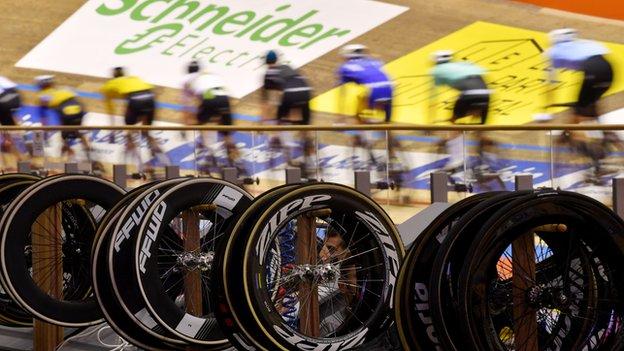
Cycling’s governing body, the UCI, has toughened its rules on transgender eligibility by doubling the period of time before a rider transitioning from male to female can compete.
Previous regulations required riders to have had testosterone levels below five nanomoles per litre (nmol/L) for a 12-month period prior to competition.
The UCI has changed the permitted level to 2.5 nmol/L for a 24-month period.
It says the new rules have been brought in following “new scientific studies”.
The UCI’s transgender policy had been under review after being brought into the spotlight by British rider Emily Bridges, one of cycling’s most high-profile transgender competitors.
In April, the 21-year-old – who began hormone therapy in 2021 as part of her gender dysphoria treatment – was stopped from competing in her first elite women’s race by the UCI.
The world governing body said that Bridges’ participation could only be allowed once her eligibility to race in international competitions was confirmed.
British Cycling also suspended its current policy, meaning transgender women are currently unable to compete at elite female events run by the organisation.
The UCI said scientific studies had shown that it can take as long as two years for muscle strength and power to adapt to a “female level” while 2.5 nmol/L “corresponds to the maximum testosterone level found in 99.99% of the female population”.
In a statement, the UCI said: “The latest scientific publications clearly demonstrate that the return of markers of endurance capacity to ‘female level’ occurs within six to eight months under low blood testosterone, while the awaited adaptations in muscle mass and muscle strength/power take much longer [two years minimum according to a recent study).
“Given the important role played by muscle strength and power in cycling performance, the UCI has decided to increase the transition period on low testosterone from 12 to 24 months.”
More to follow.


